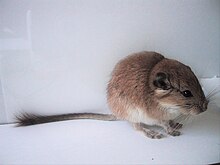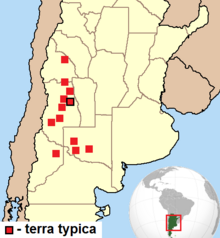
Ploidy is the number of complete sets of chromosomes in a cell, and hence the number of possible alleles for autosomal and pseudoautosomal genes. Sets of chromosomes refer to the number of maternal and paternal chromosome copies, respectively, in each homologous chromosome pair, which chromosomes naturally exist as. Somatic cells, tissues, and individual organisms can be described according to the number of sets of chromosomes present : monoploid, diploid, triploid, tetraploid, pentaploid, hexaploid, heptaploid or septaploid, etc. The generic term polyploid is often used to describe cells with three or more sets of chromosomes.

Polyploidy is a condition in which the cells of an organism have more than one pair of (homologous) chromosomes. Most species whose cells have nuclei (eukaryotes) are diploid, meaning they have two complete sets of chromosomes, one from each of two parents; each set contains the same number of chromosomes, and the chromosomes are joined in pairs of homologous chromosomes. However, some organisms are polyploid. Polyploidy is especially common in plants. Most eukaryotes have diploid somatic cells, but produce haploid gametes by meiosis. A monoploid has only one set of chromosomes, and the term is usually only applied to cells or organisms that are normally diploid. Males of bees and other Hymenoptera, for example, are monoploid. Unlike animals, plants and multicellular algae have life cycles with two alternating multicellular generations. The gametophyte generation is haploid, and produces gametes by mitosis; the sporophyte generation is diploid and produces spores by meiosis.

Viscacha or vizcacha are rare rodents of two genera in the family Chinchillidae. They are native to South America and convergently resemble rabbits.
Kirchner, a surname of German origin, from the Middle High German word, 'kirchenaere'. Kirchner originated as an occupational surname for a church worker, such as a priest, church assistant or a church property administrator. Notable people with the name include:
The golden viscacha rat or golden vizcacha rat is the single species of the genus Pipanacoctomys of the rodent family Octodontidae. It has 92 chromosomes and has been regarded as tetraploid. This octodontid and its sister-species, the plains viscacha rat, may have arisen from the diploid mountain viscacha rat, as a result of the doubling and subsequent loss of some chromosomes. However, some genetic studies have rejected any polyploidism in mammals as unlikely, and suggest that amplification and dispersion of repetitive sequences best explain the large genome size.
The aquatic rat, Ecuador fish-eating rat, fish-eating rat or Ecuadoran ichthyomyine is a South American species of semiaquatic rodent in the family Cricetidae. It is the only species in the genus Anotomys. This species is currently considered endangered. It is thought to be nocturnal and feeds on aquatic arthropods and insects. It is found in small ranges along the Andes.
Pittier's crab-eating rat is a species of semiaquatic rodent in the family Cricetidae. It is endemic to Venezuela. The natural habitats of this species are rivers and swamps. Its karyotype has 2n = 92 and FNa = 98. This was previously thought to be the highest chromosome number known for a mammal, but it has since been found that the plains viscacha rat or red viscacha rat has 4x = 2n = 102.

The plains viscacha or plains vizcacha is a species of viscacha, a rodent in the family Chinchillidae. It is the only living species within the genus Lagostomus. It is found in Argentina, Bolivia, and Paraguay. The plains viscacha is the largest species in its family. They construct elaborate burrows that house successive colonies for decades.
The mountain viscacha rat or mountain vizcacha rat, historically viscacha rat or vizcacha rat, is a species of rodent in the family Octodontidae. It is endemic to Argentina.

Tympanoctomys is a genus of rodent in the family Octodontidae. There are three extant species in the genus: T. barrerae, T. kirchnerorum and T. loschalchalerosorum. T. loschalchalerosorum was formerly considered to be monotypic within the genus Salinoctomys, but has been shown by genetic analysis to nest within the variation of T. barrerae.
Viscacha rats are a group of rodents in the family Octodontidae. All species are found in Argentina. They are placed in the following genera:

Octodontidae is a family of rodents, restricted to southwestern South America. Fourteen species of octodontid are recognised, arranged in seven genera. The best known species is the common degu, Octodon degus.
The Chalchalero viscacha rat or Chalchalero vizcacha rat is a species of caviomorph rodent in the family Octodontidae. It was formerly considered to be monotypic within the genus Salinoctomys, but has been shown by genetic analysis to nest within Tympanoctomys, and in particular, within the variation of T. barrerae. The species is endemic to a small area of northwestern Argentina, where it lives in shrublands bordering the salt flats of the Salinas Grandes. Its diet consists of halophyte plants. It is named after an Argentine musical group, Los Chalchaleros, whose songs were popular with its discoverers.
Bridges's degu is a species of rodent in the family Octodontidae. It is found in southern Chile. The species was named after Thomas Bridges.
The 2000s witnessed an explosion of genome sequencing and mapping in evolutionarily diverse species. While full genome sequencing of mammals is rapidly progressing, the ability to assemble and align orthologous whole chromosomal regions from more than a few species is not yet possible. The intense focus on the building of comparative maps for domestic, laboratory and agricultural (cattle) animals has traditionally been used to understand the underlying basis of disease-related and healthy phenotypes.
Kirchner's viscacha rat or Kirchner's vizcacha rat is a species of rodent in the family Octodontidae described in 2014. It is one of three species in the genus Tympanoctomys. That species is endemic to Chubut Province in the central western Argentina, where it has a fragmented range. Its natural habitat is desert scrubland, dunes and salt flats, where it eats halophyte plants. It is a solitary, nocturnal rodent that constructs large mounds with complex burrows. The species was named in honor of both Cristina Fernández de Kirchner and Néstor Kirchner, presidents of Argentina.

The High Monte is a montane grasslands and shrublands ecoregion in Argentina.

Michael A. Mares is an American zoologist, academic, and author. He is the Emeritus Director and Curator at the Sam Noble Museum, as well as a Professor Emeritus in the Department of Biology at the University of Oklahoma.











